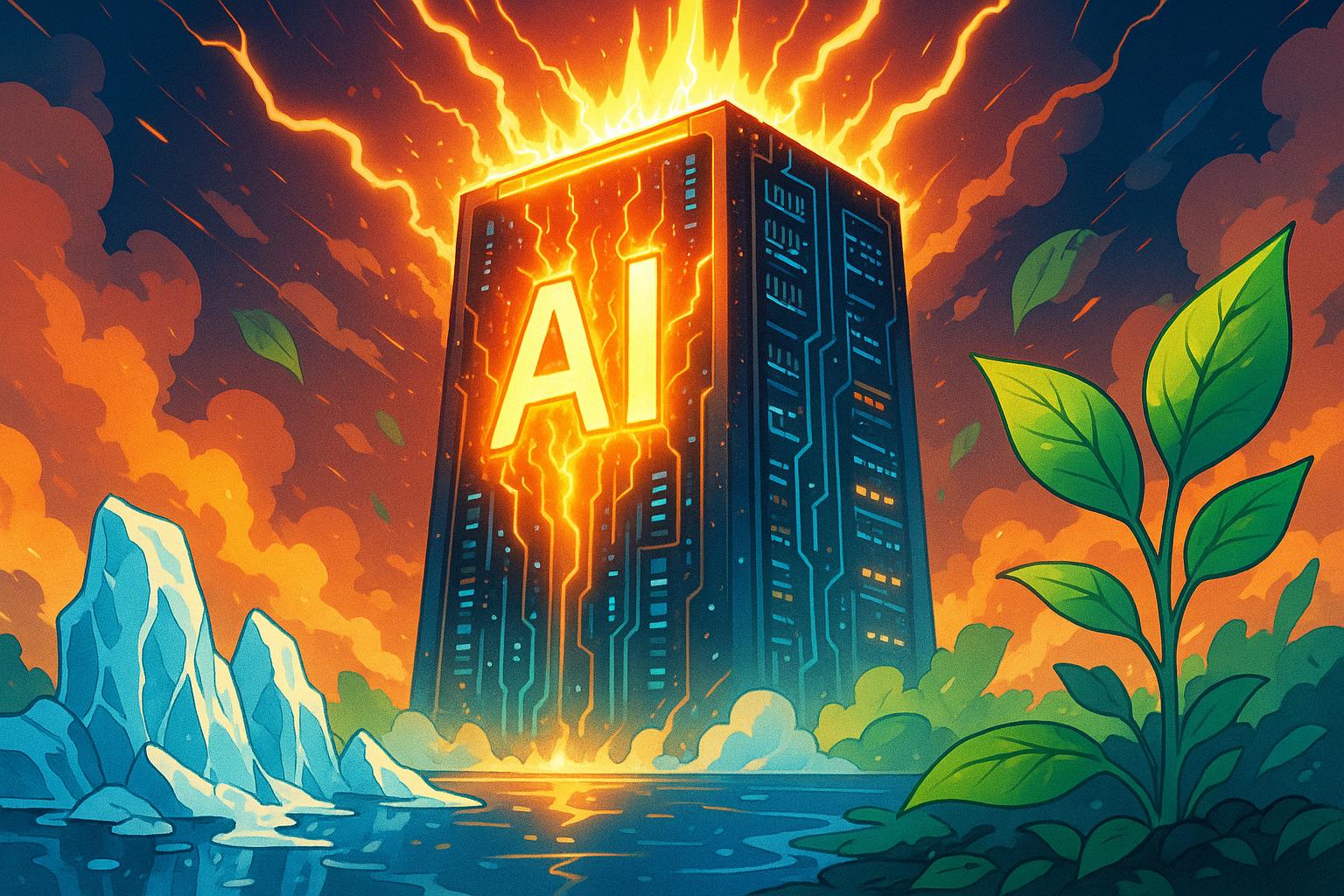The increasing energy consumption associated with artificial intelligence (AI) is raising significant environmental concerns, as highlighted by an alarming study from MIT Technology Review. It reveals that generating just a five-second AI video can consume as much energy as operating a microwave for over an hour. Such findings provide a stark illustration of the ecological costs associated with seemingly benign technologies. In a time when climate change awareness is at an all-time high, the energy demands of AI models are set to push existing infrastructures to their limits.
Data centres, the backbone of AI operations, have seen their energy requirements double since 2017, with projections suggesting that by 2028, AI will account for nearly half of this consumption. The study constructed a hypothetical scenario involving typical interactions with AI, including multiple questions, image requests, and video generation, ultimately consuming around 2.9 kilowatt-hours—the equivalent of boiling potatoes for three and a half hours. This staggering figure underscores a troubling reality: while users enjoy instantaneous responses and creative outputs, they remain largely unaware of the significant energy costs incurred.
The trend of rising energy demand isn't confined to individual users; tech giants like Microsoft, Amazon, and Google are making significant investments to expand data centre capabilities, with projections exceeding $300 billion by 2025. However, the optimism surrounding these investments is tempered by concerns over whether current infrastructure can sustainably accommodate such rapid growth. Discrepancies between planned projects and actual requirements suggest the potential for an oversupply of data centres, which could strain resources even further.
Moreover, while some AI models, like TinyBERT, showcase energy efficiency, others, particularly large language models (LLMs) such as GPT-4, consume disproportionately high levels of energy due to their complexity. These discrepancies accentuate the need for greater transparency and standardised metrics within the industry to assess energy consumption effectively. Given that emissions from AI data centres now rival those of the aviation industry, accounting for approximately 3% of global emissions, the urgency for improved energy solutions has never been clearer.
Governments are starting to respond with initiatives aimed at enhancing energy resources for AI infrastructure. For instance, President Joe Biden recently signed an executive order to expedite the establishment of clean energy facilities dedicated to AI, reflecting a commitment to addressing its increasing energy demands while considering national security implications. However, the need for a balanced approach remains essential; energy solutions must not simply revert to fossil fuel reliance but instead favour renewable or nuclear options to mitigate environmental impact.
Innovative projects are also emerging to address the growing demand. The upcoming 'Stargate UAE' data centre complex aims to be the largest of its kind outside the U.S. and will harness state-of-the-art AI technologies. Set to begin operations in 2026, it plans to utilise advanced server capabilities while aspiring to connect both government and commercial sectors to cutting-edge AI solutions. Such projects may represent a step toward integrating more efficient energy practices within the framework of AI development.
As AI continues to evolve and embed itself deeper into daily life through applications like ChatGPT and AI-driven media, the pressure on energy infrastructures is destined to increase. While individual use might have a negligible impact on the overall energy consumption, collective action in urging data centre operators towards more sustainable practices could foster significant changes. Ultimately, the discourse surrounding AI's carbon footprint must align with other pressing discussions about sustainability, reminiscent of the scrutiny faced by industries like agriculture.
In this rapidly advancing technological landscape, the hope is for a future where AI can flourish without necessarily overwhelming our energy resources. Without intentional planning and investment in energy-efficient technologies and greener energy sources, we might find ourselves in an untenable situation—struggling to cool supercomputers with inadequate resources while attempting to navigate the complexities of rising energy demands. The engagement of all stakeholders—developers, users, and governments—will be critical in ensuring that the rise of AI does not come at the cost of our planet’s future.
Reference Map:
- Paragraph 1 – [1], [3]
- Paragraph 2 – [1], [2]
- Paragraph 3 – [5], [6]
- Paragraph 4 – [4], [7]
- Paragraph 5 – [1], [2]
- Paragraph 6 – [3], [4]
- Paragraph 7 – [1], [5]
Source: Noah Wire Services
